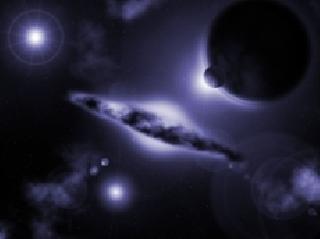
WASHINGTON (PTI): Planetary scientists claim to have created the largest-ever three-dimensional map of the distant Universe, using the light of the brightest objects in the cosmos.
Since this distant light took eons to reach Earth, the map is essentially a window back in time, providing an unprecedented view of what the universe looked like 11 billion years ago, say the scientists.
In fact, they made the map using light from 14,000 quasars – supermassive black holes at the centers of galaxies billions of light years away – with the third Sloan Digital Sky Survey (SDSS-III).
The map is the first major result from the Baryon Oscillation Spectroscopic Survey (BOSS), SDSS-III's largest survey, whose principal investigator is David Schlegel of the US Department of Energy's Lawrence Berkeley Laboratory.
The huge new map was presented at the April meeting of the American Physical Society in Anaheim, CA, by An’e Slosar of Brookhaven National Laboratory.
“Quasars are the brightest objects in the Universe, which we use as convenient backlights to illuminate the intervening hydrogen gas that fills the universe between us and them,” Slosar said.
“We can see their shadows, and the details in their shadows” – specifically, the absorption features in their spectra known as the Lyman-alpha forest – "allowing us to see how the gas is clumped along our line of sight.
"The amazing thing is that this allows us to see the Universe so very far away, where measuring positions of individual galaxies in large numbers is impractical," he said.
BOSS is the first attempt to use the Lyman-alpha forest to measure dark energy, according to lead investigator Schlegel.
"Because the Sloan Telescope has such a wide field of view, and because these quasars are so faint, there was no one who wasn't nervous about whether we could really bring it off," he said.
By using 14,000 of the quasars collected by the Sloan Telescope at Apache Point Observatory in New Mexico during the first year of BOSS's planned five-year run, the new map shows that indeed it is possible to determine variations in density of intergalactic hydrogen gas at cosmological distances and thus to measure the effects of dark energy at those distances.
"These have given only one-dimensional information about fluctuations in density along the line of sight. Before now there has never been enough density of quasars for a 3D view," Slosar said.
 Previous Article
Previous Article Next Article
Next Article













The Indian Air Force, in its flight trials evaluation report submitted before the Defence Ministry l..
view articleAn insight into the Medium Multi-Role Combat Aircraft competition...
view articleSky enthusiasts can now spot the International Space Station (ISS) commanded by Indian-American astr..
view article